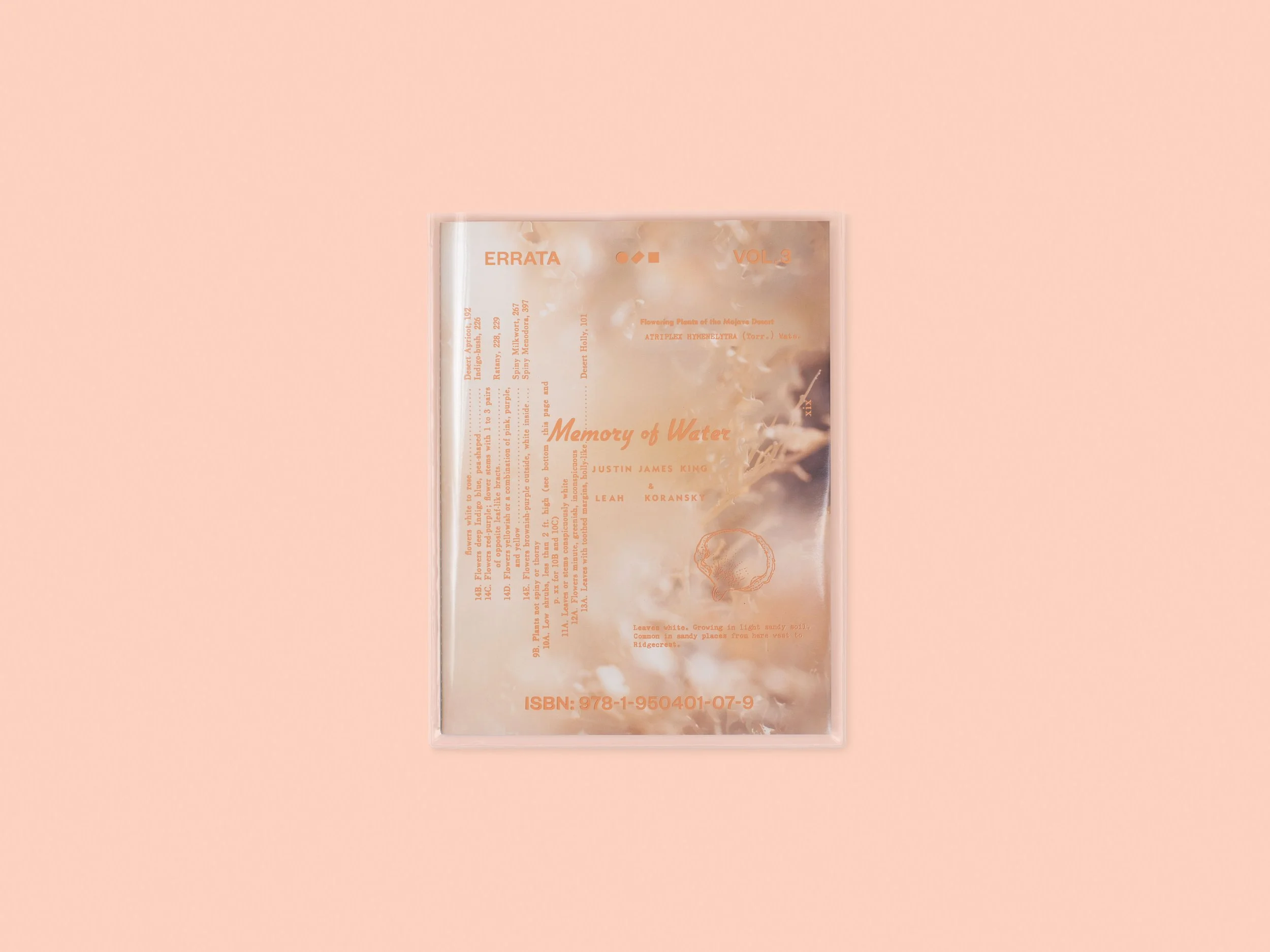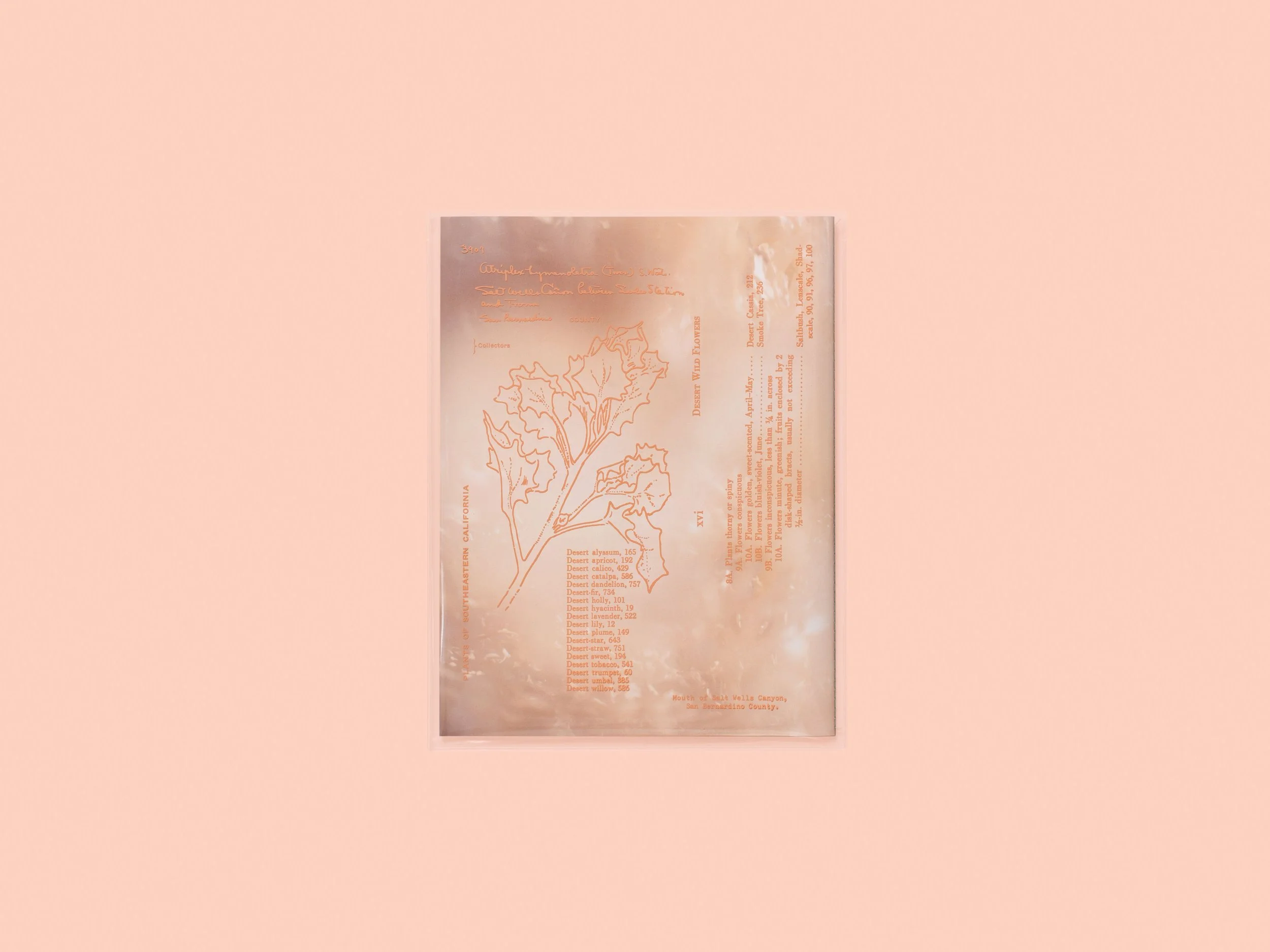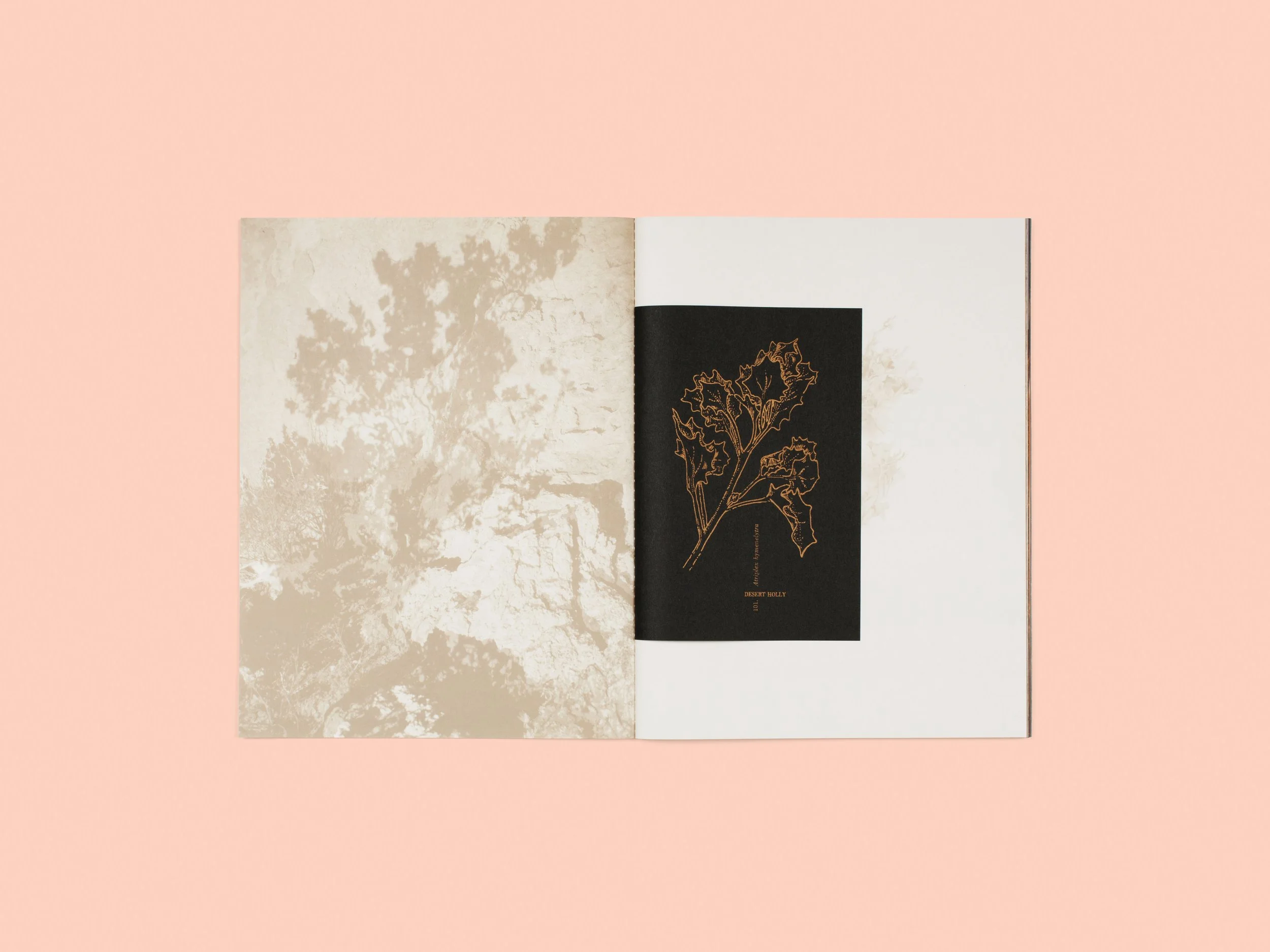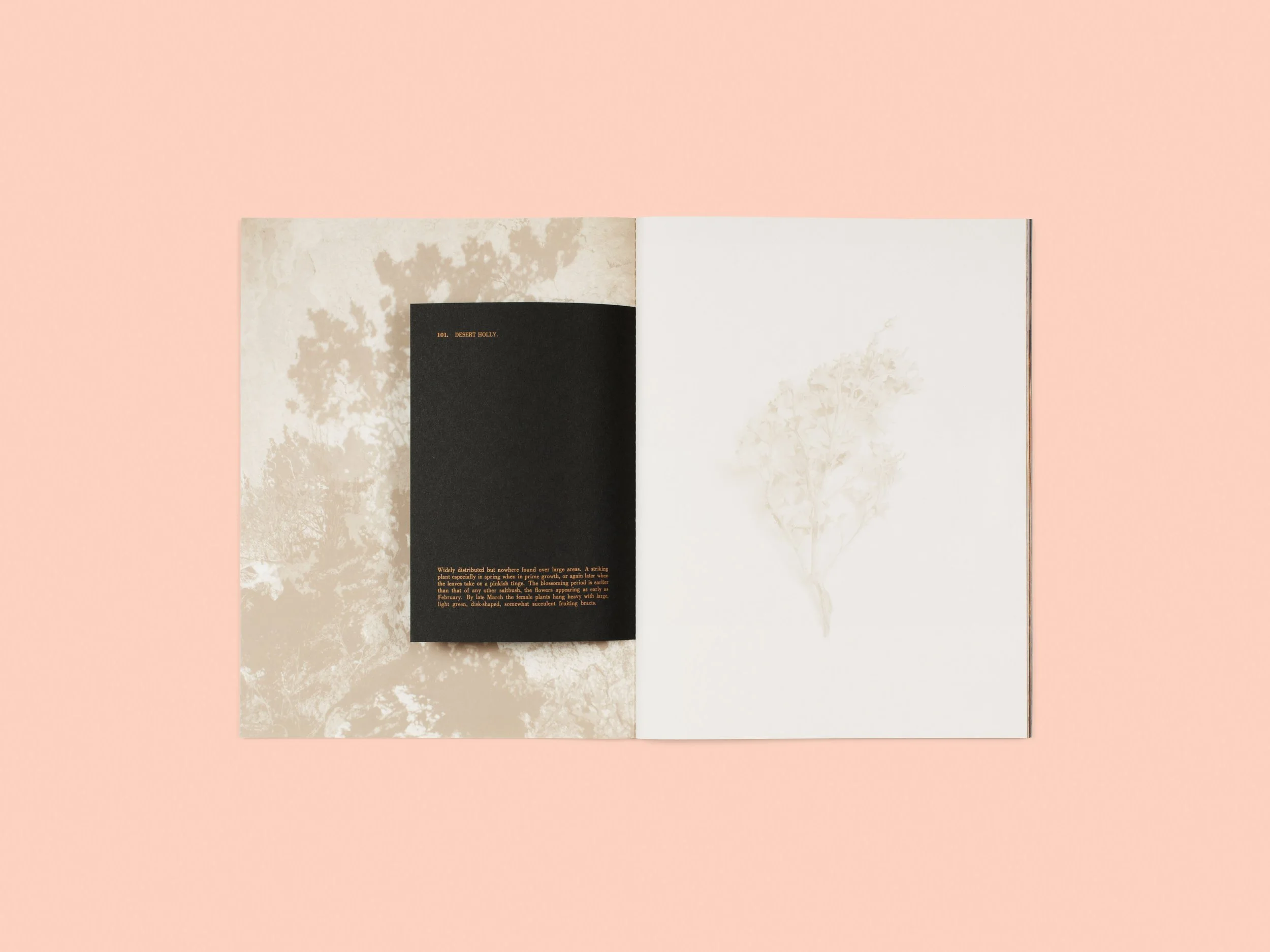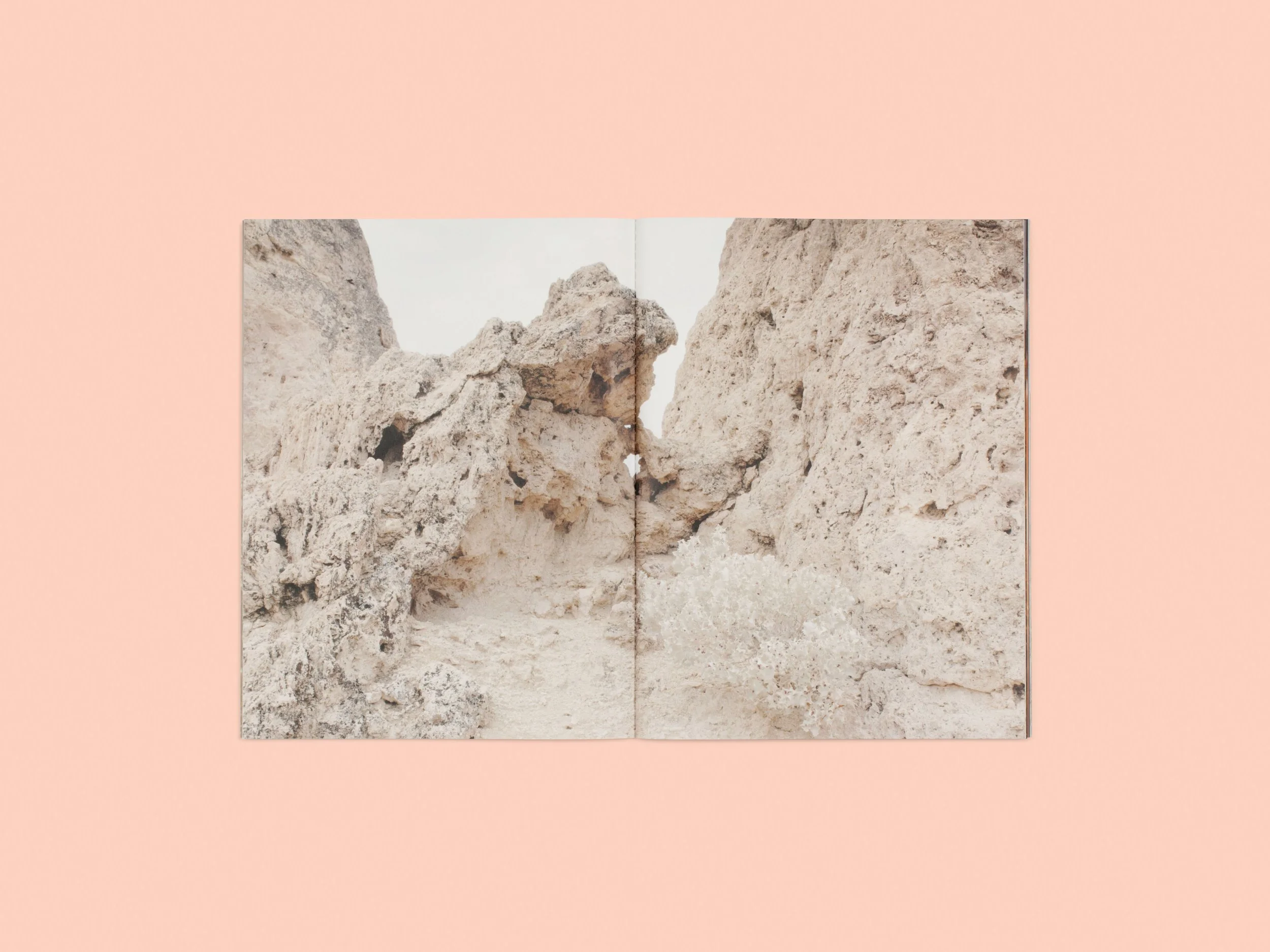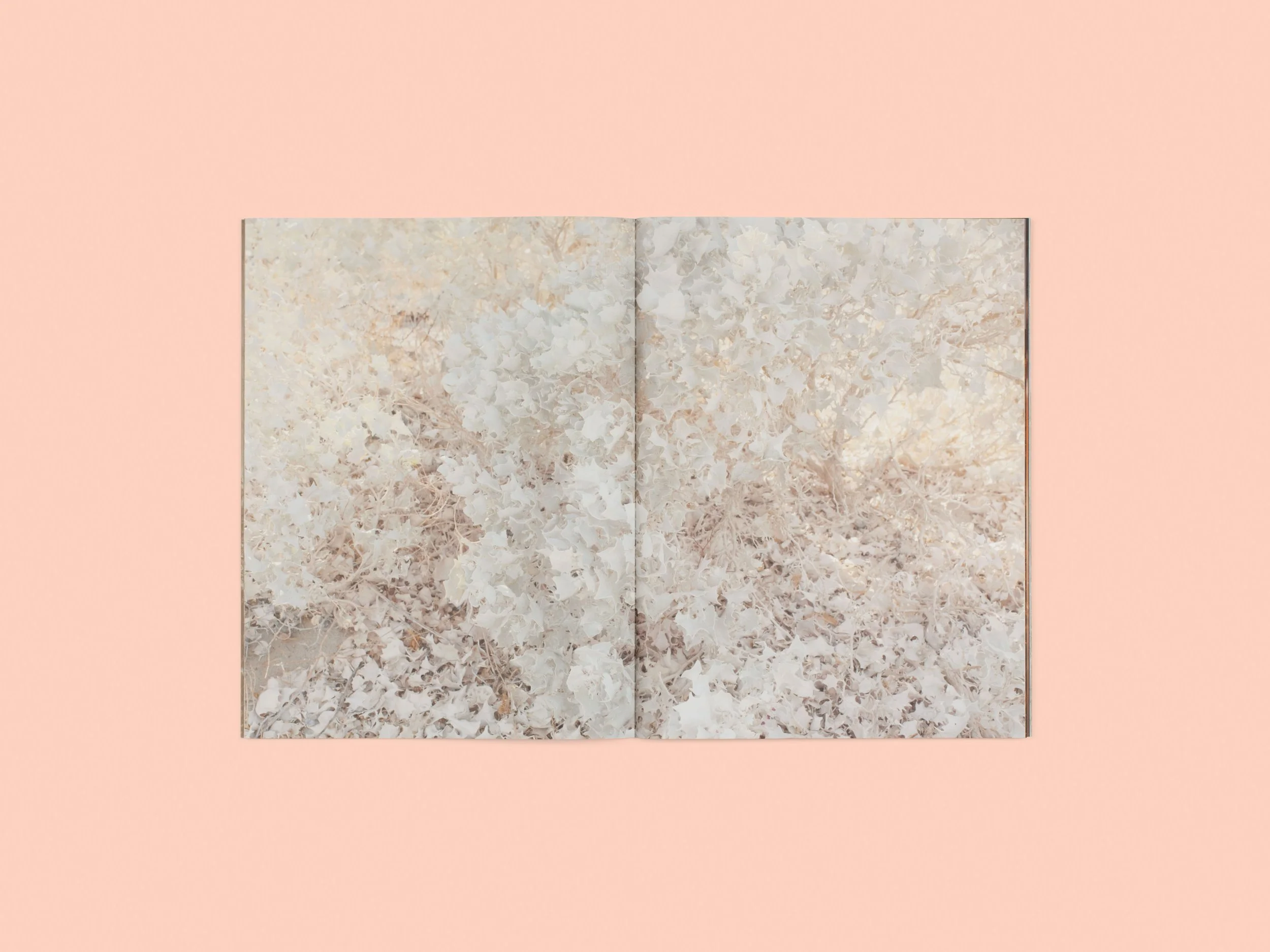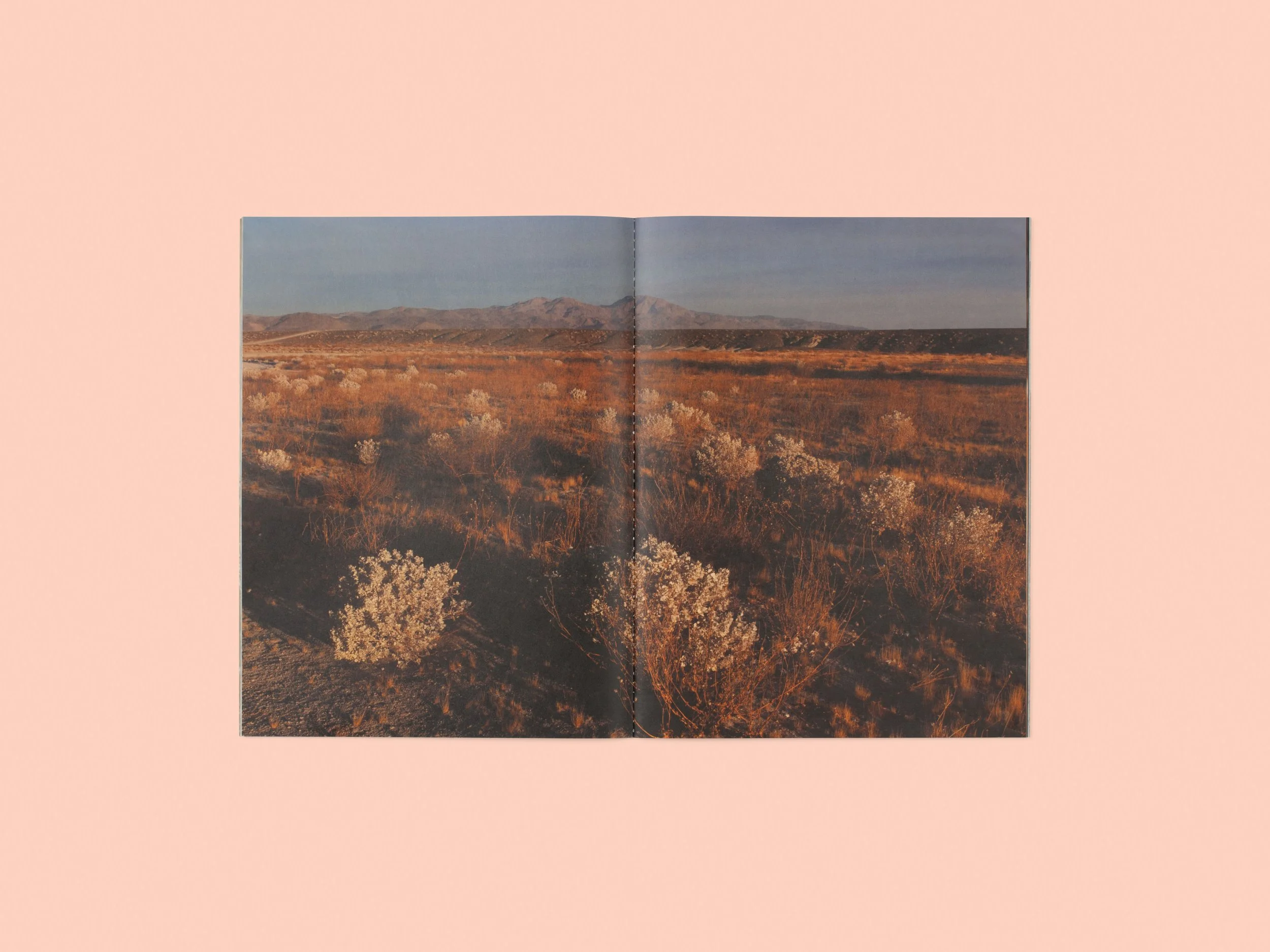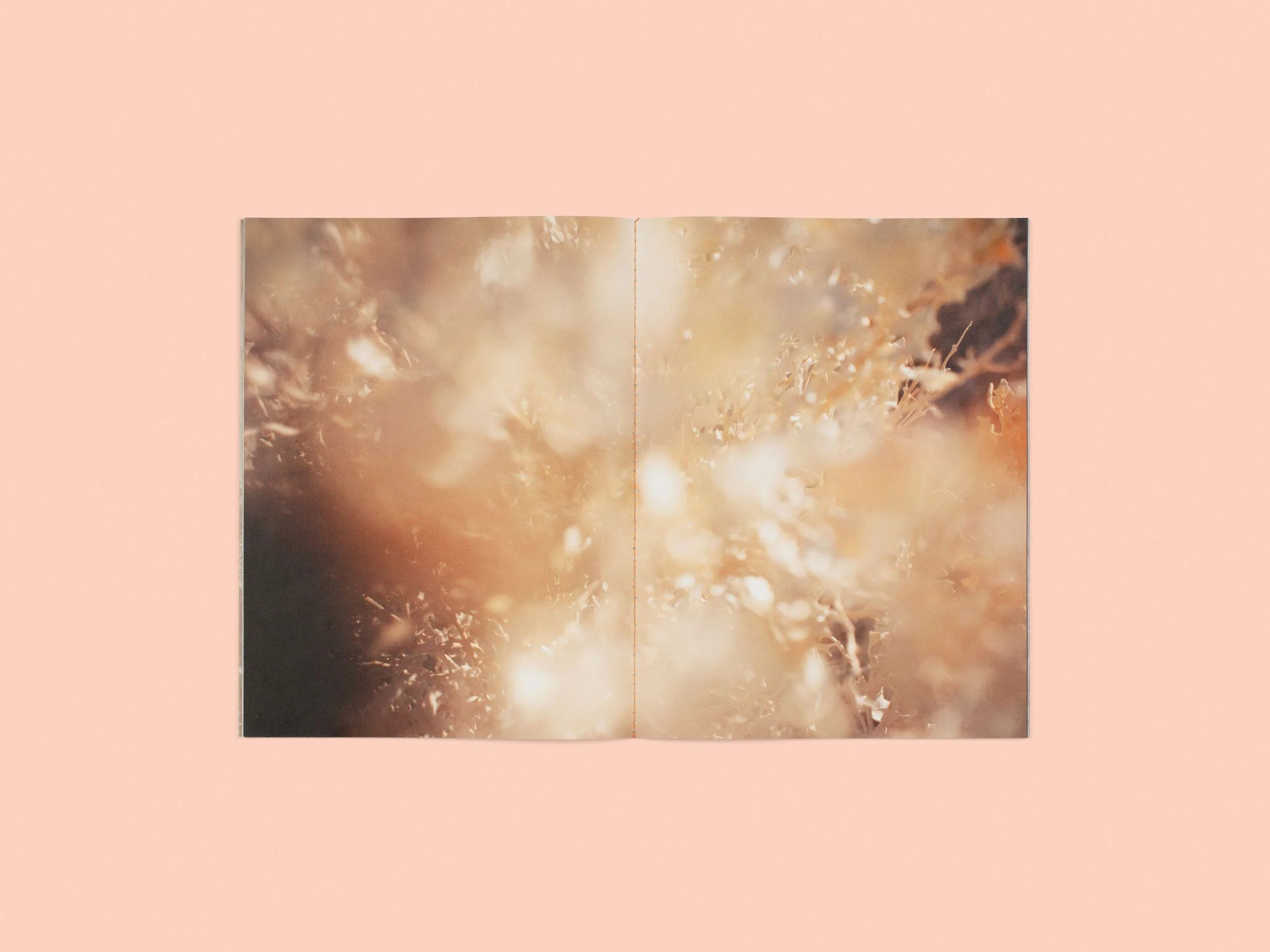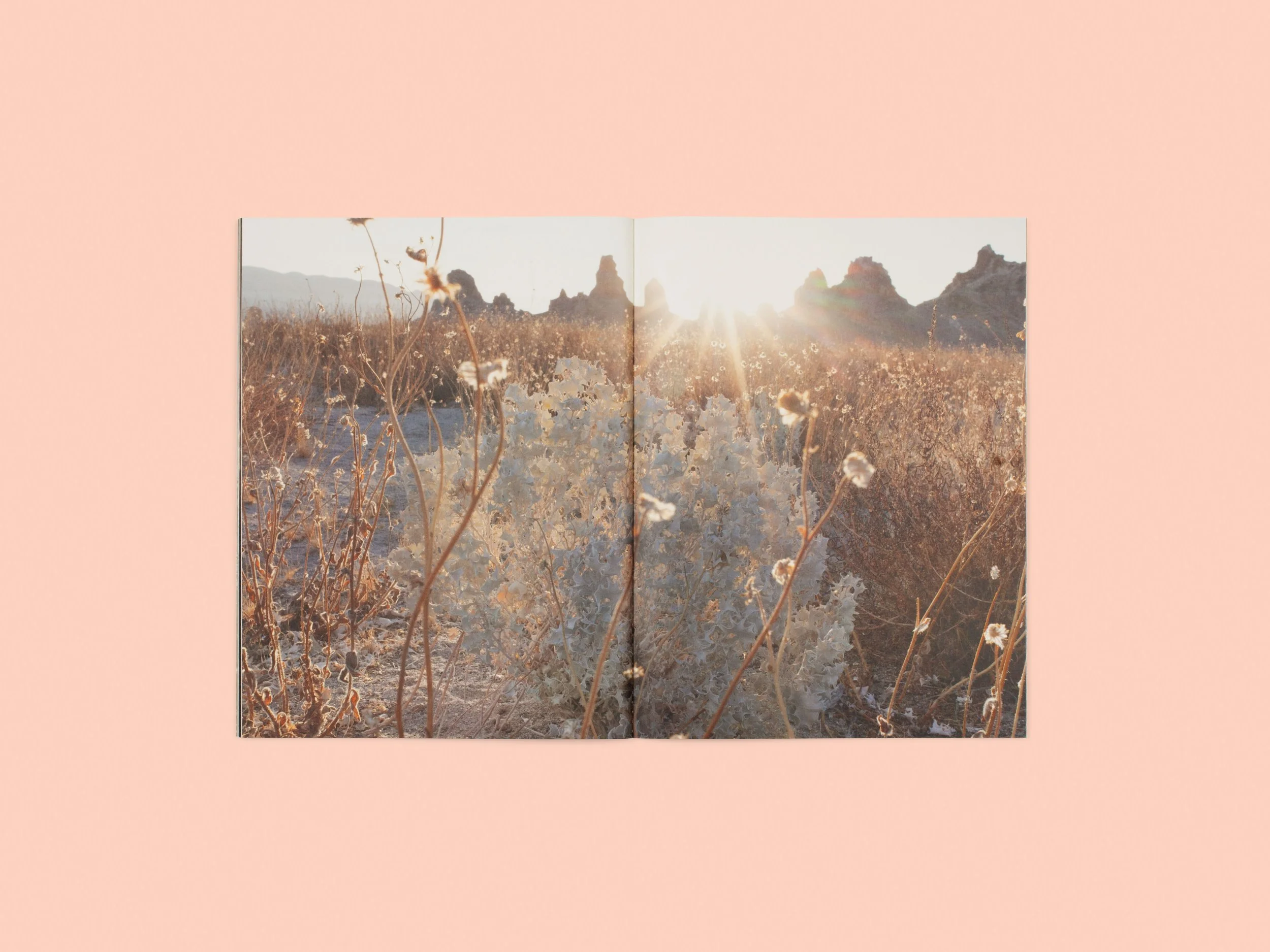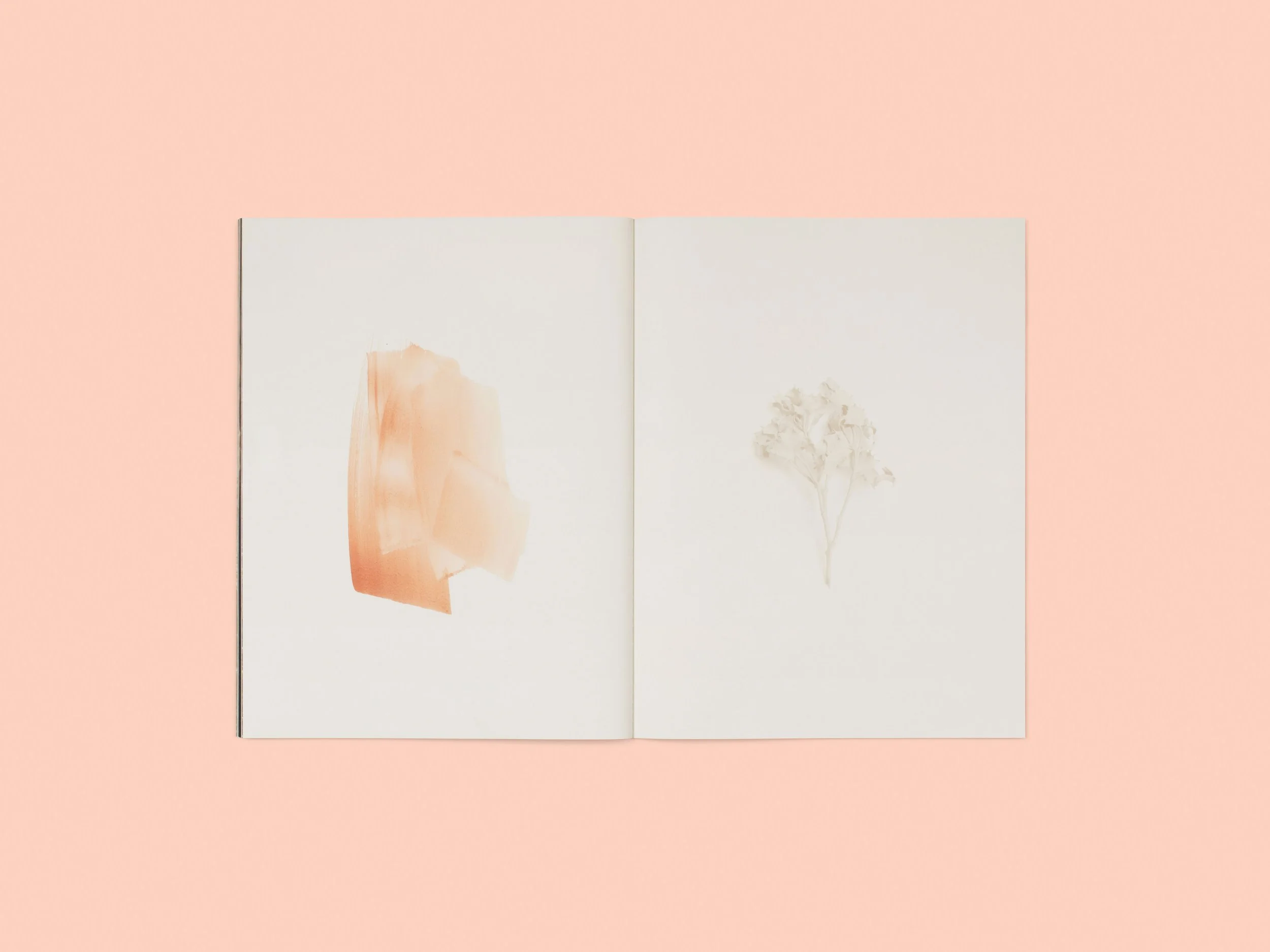Production Specs
Trim Size: 9x11.75in
Page Count: 40
Binding: Booklet (Singer Sewn)
Thread Color: Terracotta & Celadon
Format: Paperback
Printing: 4 Color
Paper Stock: 60#T Standard Natural
Cover Material: Vinyl Clear Sleeve
Cover Details: Screenprint (Terracotta) Specialty Details: Risograph Insert (Gold, Metallic)
Colophon
Book Design: Christina Labey
Archive Sources: Botanical illustrations and select text from Desert Wild Flowers by Edmund C. Jaegar (Stanford University Press, 1941); the Dudley Herbarium (Stanford University); and the herbarium of the California Academy of Sciences. ISBN: 978-1-950401-07-9 Publication Date: May 2025 Edition Size: Open Edition

